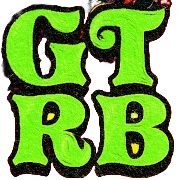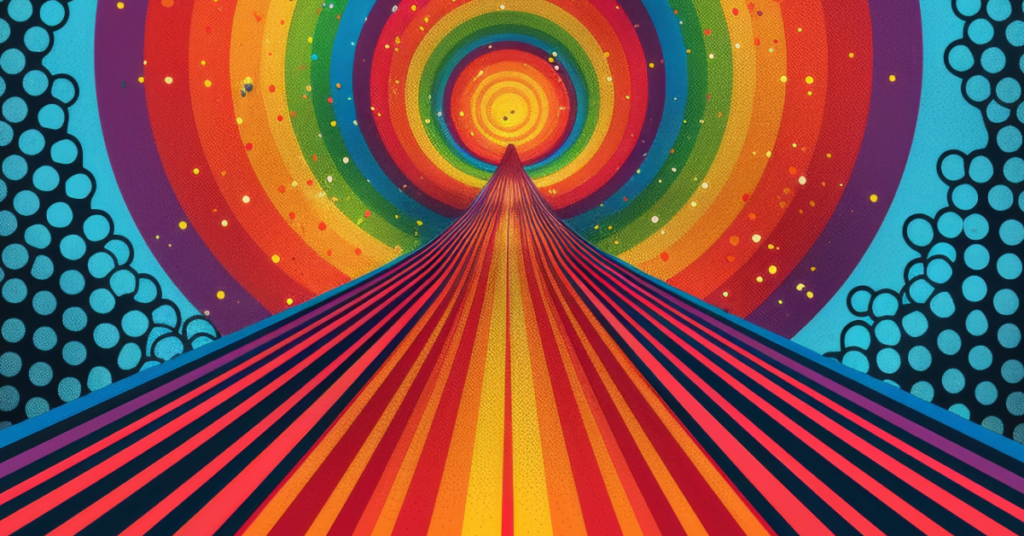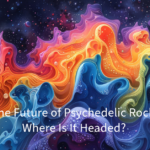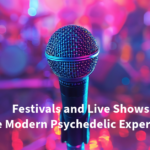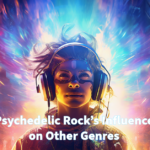The 1960s were a time of radical change, a decade when society was upended by questioning everything from political power to cultural norms. At the heart of this social revolution was the counterculture movement—a wave of rebellion that rejected traditional values and sought new ways of thinking, being, and expressing oneself. Music became the soundtrack to this movement, and no genre captured the spirit of rebellion and exploration quite like psychedelic rock.
This new genre didn’t emerge in a vacuum; it was born from the cultural upheaval of the 1960s, intertwined with the quest for expanded consciousness and a desire to break free from societal constraints. Psychedelic rock became a way for artists to express the uncharted territory of their minds and the shifting landscape of society, offering an auditory experience that was as mind-bending and boundary-pushing as the counterculture itself.
In this post, we’ll explore how the rise of psychedelic rock was deeply connected to the counterculture movement of the 1960s. We’ll look at the cultural climate that gave birth to this rebellious music and delve into the early musical influences that shaped the genre. From Ken Kesey and the Merry Pranksters’ wild acid tests to the enduring impact of blues and folk legends, this is the story of how psychedelic rock became the sound of a revolution.
Counterculture and Psychedelic Rock
The counterculture movement of the 1960s was a response to a world that seemed increasingly out of touch with the desires and needs of a new generation. Young people began to question the institutions and values that had defined their parents’ lives—everything from politics to war, from social expectations to materialism. The youth of the 1960s sought something more meaningful, more authentic, and more liberating, and in this quest, they turned to art, music, and spirituality.
Psychedelic rock became the perfect vehicle for this new consciousness. It was music that didn’t just entertain—it transformed. It took listeners on journeys of self-discovery, altered perceptions, and heightened awareness. At the heart of this transformation was the use of psychedelics, particularly LSD, which opened doors to new ways of experiencing reality. Musicians began to incorporate the expansive and surreal experiences of these drug trips into their sound, creating music that mirrored the mind-expanding effects of hallucinogens.
One of the most influential figures in this cultural shift was Ken Kesey, an author and countercultural icon, best known for his novel One Flew Over the Cuckoo’s Nest. But Kesey’s influence extended far beyond literature; he became a central figure in the psychedelic movement through his infamous acid tests. Alongside his group of freewheeling adventurers known as the Merry Pranksters, Kesey held gatherings that blended music, light shows, and the shared experience of taking LSD. These acid tests weren’t just parties; they were cultural incubators where musicians, artists, and curious seekers explored new realms of consciousness together.
It was at these events that the Grateful Dead, a band that would go on to become synonymous with the counterculture movement, honed their sound. The Dead weren’t just playing music—they were creating a sonic experience that echoed the unpredictable, swirling journey of an acid trip. Their improvisational style and lengthy jams became a hallmark of the psychedelic rock genre, embodying the free-spirited, exploratory nature of the counterculture movement.
Another key figure in this scene was Janis Joplin, whose raw and soulful voice made her a symbol of both musical power and personal freedom. Joplin, along with bands like Jefferson Airplane and Big Brother and the Holding Company, became pillars of the psychedelic rock scene, not only contributing to its sound but also embodying the ethos of rebellion and liberation that defined the era. These musicians weren’t just performers—they were cultural icons whose music served as a rallying cry for those seeking to break free from the constraints of traditional society.
Psychedelic rock and the counterculture movement were inextricably linked. The music provided the soundtrack for a generation that was seeking something deeper, more meaningful, and more connected. In return, the counterculture movement gave psychedelic rock the freedom and the audience it needed to grow and evolve.
Festivals and Cultural Impact
The cultural revolution of the 1960s wasn’t confined to small, underground gatherings like Ken Kesey’s acid tests. It soon exploded onto the national and international stage, with music festivals becoming the epicenters of this new movement. Festivals like the Monterey Pop Festival and Woodstock were more than just music events—they were cultural milestones that brought together thousands of people, united by a shared desire for peace, love, and artistic freedom.
The Monterey Pop Festival, held in 1967, is often considered the first major rock festival, and it set the stage for the explosion of psychedelic rock. Monterey was where many iconic performances took place, including Janis Joplin’s breakout performance with Big Brother and the Holding Company and Jimi Hendrix’s legendary guitar-burning finale. The festival helped launch the careers of many psychedelic rock legends, while also solidifying the genre’s place in the cultural zeitgeist.
Woodstock, held in 1969, became the most iconic festival of the era, a symbol of the counterculture movement at its peak. The festival’s tagline—“Three Days of Peace & Music”—captured the spirit of the times. Half a million people gathered in rural New York to experience a lineup that included many of the biggest names in psychedelic rock, including Jefferson Airplane, Janis Joplin, and the Grateful Dead.
These festivals weren’t just about the music; they were about community, freedom, and the power of art to enact social change. The performances at Monterey and Woodstock became cultural touchstones, helping to shape the collective identity of a generation. The festivals also provided a platform for the cross-pollination of genres, where psychedelic rock bands shared stages with folk, blues, and progressive rock acts, creating an environment of creative collaboration that further pushed the boundaries of music.
The festivals of the 1960s didn’t just celebrate music—they nurtured a cultural revolution. They helped to solidify the place of psychedelic rock in popular culture, while also acting as platforms for the social change that the counterculture movement sought to bring about.
Early Influences: Blues and Folk
While psychedelic rock was undeniably a product of the counterculture movement, its roots lay in the deep, soulful traditions of blues and folk music. These genres provided the foundation upon which the psychedelic sound was built, offering the raw emotional power and storytelling depth that would be expanded and transformed in the hands of psychedelic rock pioneers.
The influence of blues music on psychedelic rock is undeniable. Legends like Muddy Waters and Howlin’ Wolf laid the groundwork for the genre, their emotive, raw sound serving as a wellspring of inspiration for countless rock musicians. Psychedelic rock took the visceral power of blues and twisted it into new shapes, using effects like distortion and feedback to create a sound that was simultaneously grounded in tradition and completely out of this world.
One of the most significant bridges between traditional music and the psychedelic scene was Bob Dylan. Dylan began his career as a folk singer, his songs filled with poetic lyrics and stories of social justice and personal reflection. But in 1965, Dylan shocked the folk world when he “went electric” at the Newport Folk Festival. This moment marked a pivotal shift in the music landscape, as Dylan brought the rebellious spirit of folk into the rock world, blending the two genres in a way that would help pave the way for psychedelic rock.
Dylan’s influence on the genre cannot be overstated. His transition from acoustic folk to electric rock mirrored the shift in culture, as the youth of the 1960s moved away from the conservative values of their parents and embraced new forms of expression. The narrative depth of Dylan’s lyrics, combined with the raw power of blues, provided a blueprint for psychedelic rock’s expansive storytelling and emotional resonance.
In many ways, psychedelic rock was a natural evolution of blues and folk, taking the emotional depth and narrative structures of these genres and expanding them with experimental sounds, surreal lyrics, and a sense of boundless exploration.
Fertile Ground to Grow
The counterculture movement of the 1960s provided the fertile ground from which psychedelic rock blossomed. It was a time of rebellion, exploration, and a desire for deeper meaning—a cultural climate that was perfectly suited to the emergence of a genre that sought to push the boundaries of sound and consciousness. The early influences of blues and folk music gave psychedelic rock its emotional core, while the festivals and communal gatherings of the era helped to shape it into a cultural force that extended far beyond the music itself.
Today, the legacy of psychedelic rock lives on, with bands like Good Trees River Band continuing to evolve the genre while staying true to its roots. Just as the counterculture movement provided the spark for the birth of psychedelic rock, modern artists continue to draw on the genre’s spirit of innovation and exploration, ensuring that its influence will continue to resonate for generations to come.
